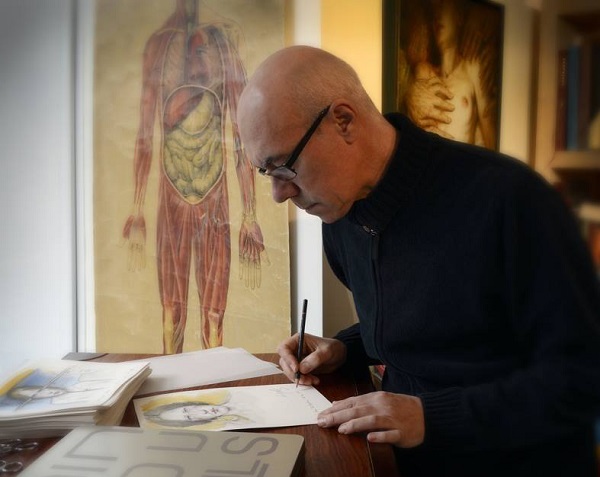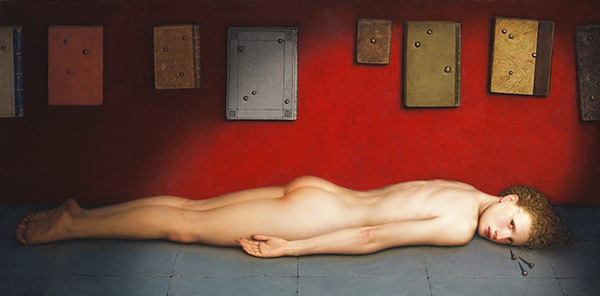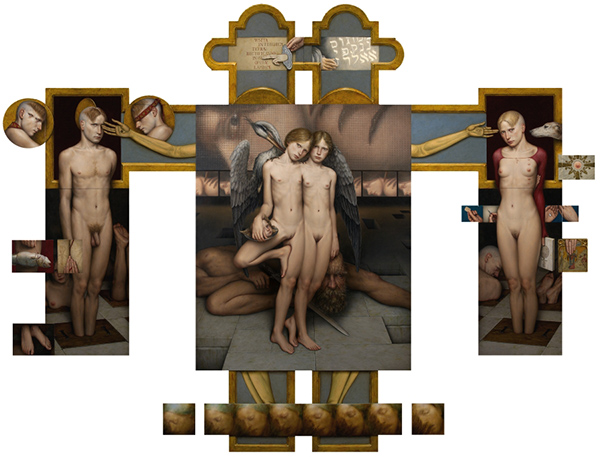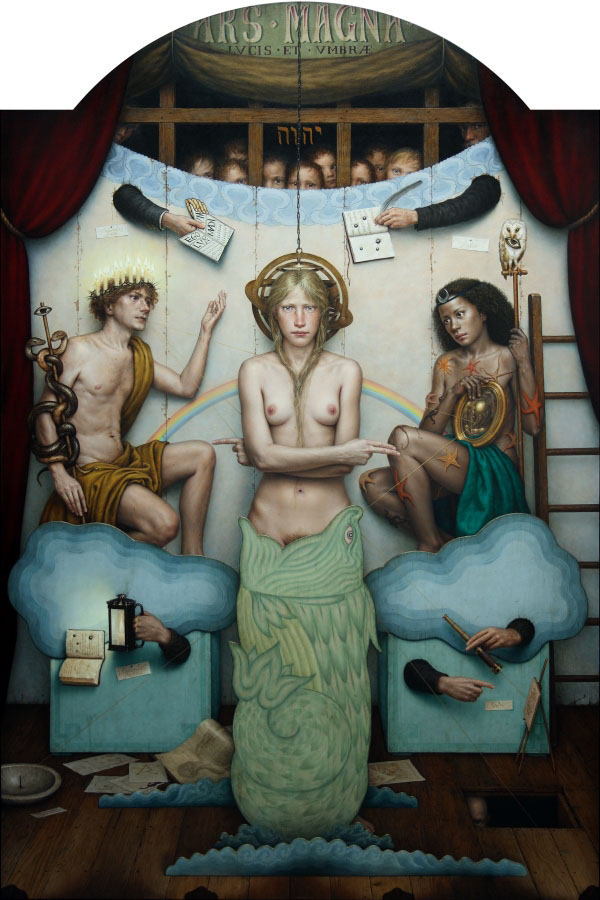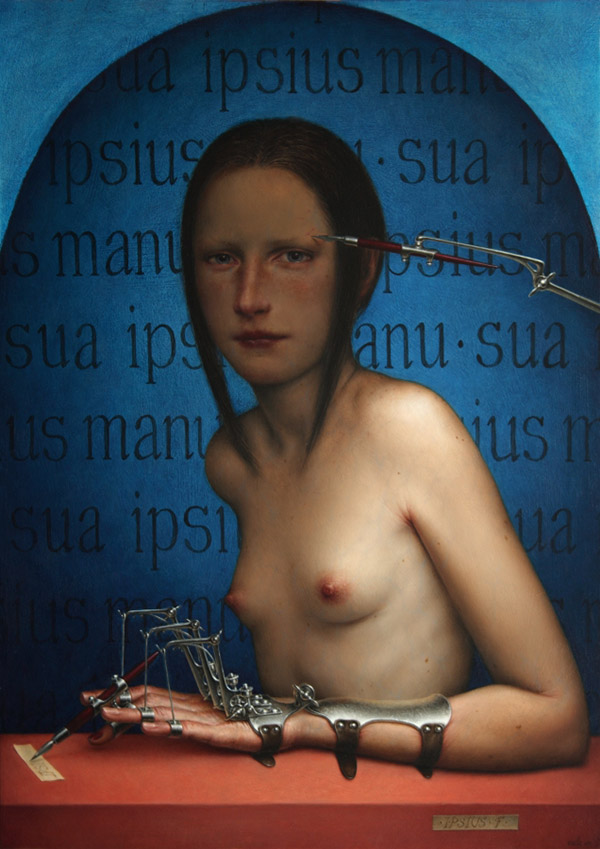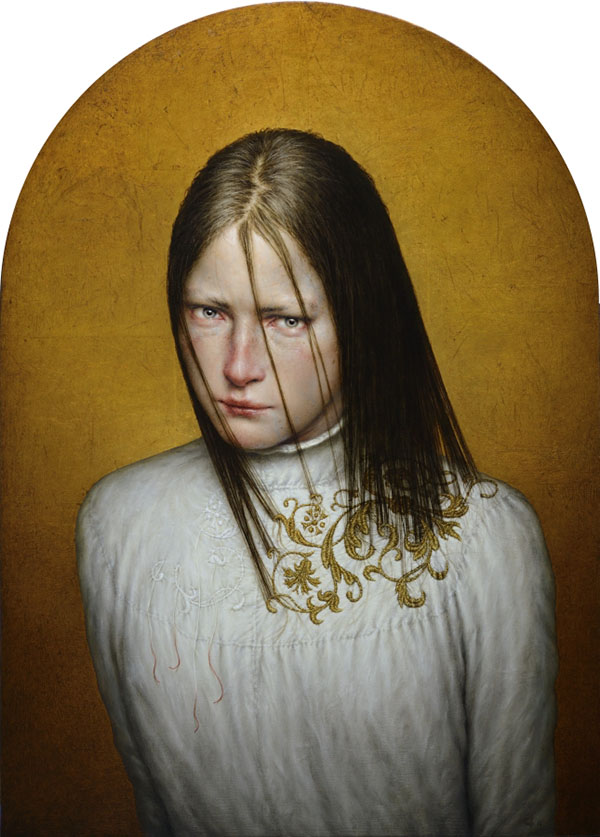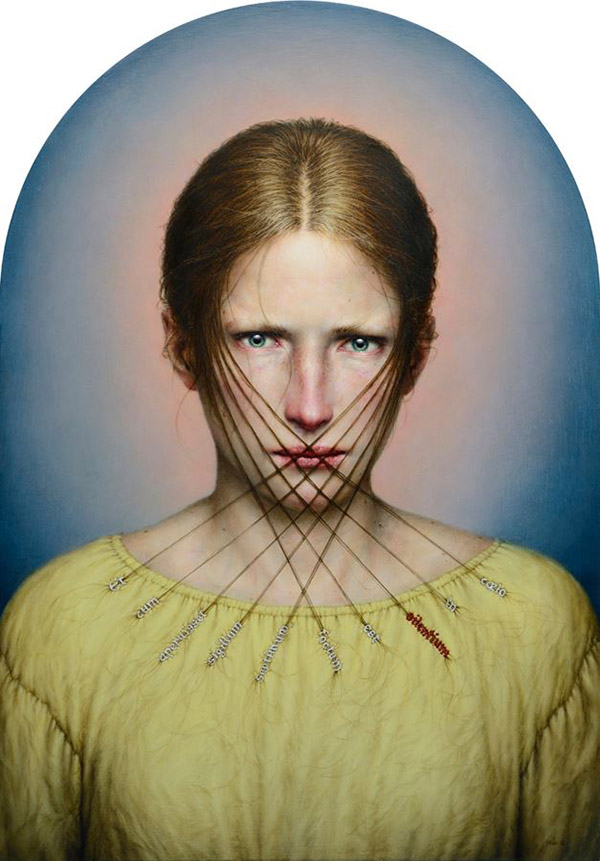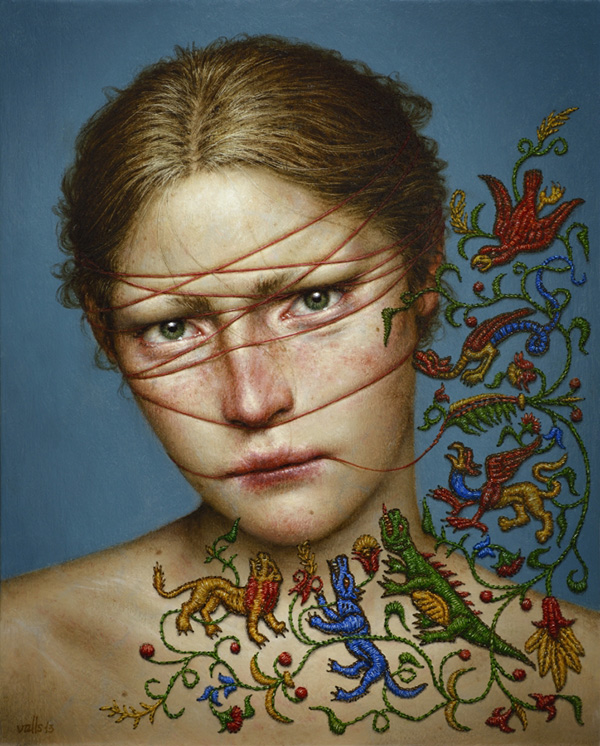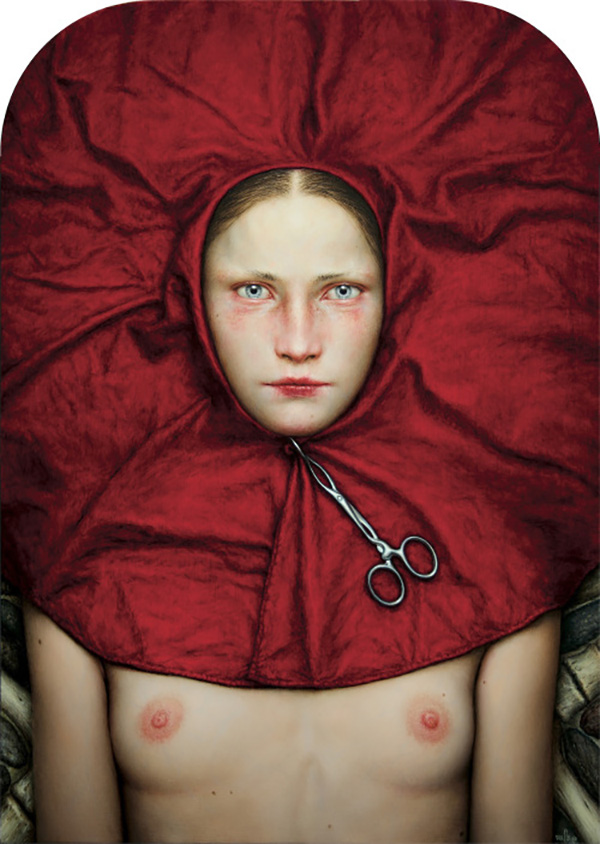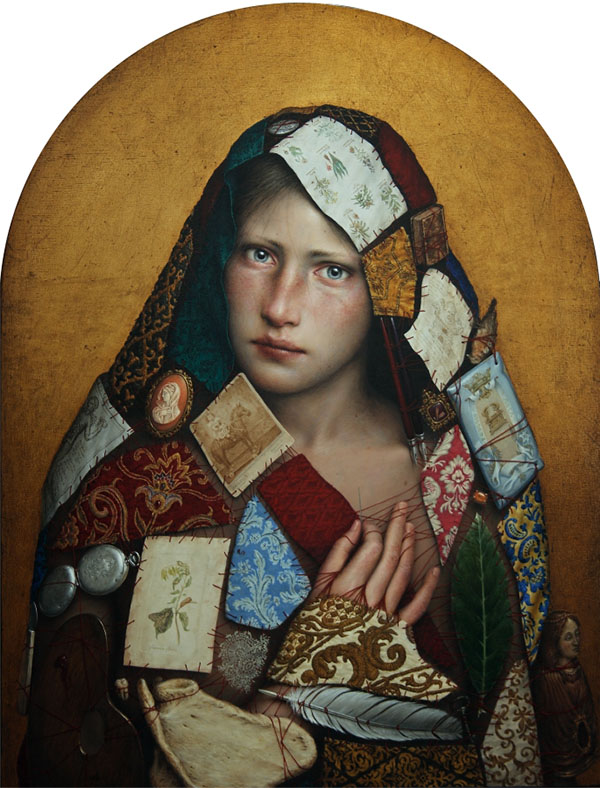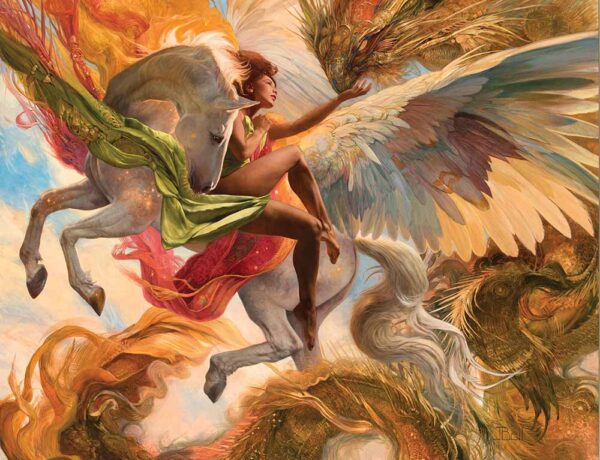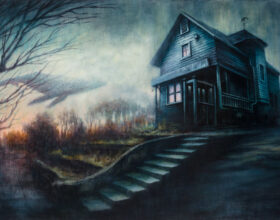In art you often hear of the Old Masters, or references to past masters … but what of masters of the present day? If any artists are to be proclaimed as “New Masters” then surely prominent among their number would be Spanish painter Dino Valls, whose figurative work is both technically superb and imbued with many layers of meaning. Here are works that you can lose yourself in, each one a psychological thriller with subtext and detail which will surprise anew on each viewing.
Given the often graphic representation of surgical procedures and arrays of vintage medical instruments featured in his works, it is perhaps not not totally unexpected to discover he trained as a surgeon before becoming an artist, a journey as fascinating as his work and the man himself. Join us on this journey, the full interview below with Dino provided exclusively with the digital edition of beautiful.bizarre Issue 013.
b.b: Your decision of career must have been .. alarming .. for your family, after just having completed your medical training. When did you first become aware of a desire to become an artist? Did you have much artistic influence from within your family or encouragement in your choice of career?
DV: To have a strong liking for Art, or even develop an intense artistic and creative thinking, is very different from being considered an artist in the professional sense, meaning the exclusive or predominant dedication as a job. Since childhood I have been very interested in drawing, also in literature and music, but I didn’t think it could be my way of life. In my home there was always interest in culture. My father has always maintained a constant fondness for drawing and literature, although his profession has been very technological.
When I was old enough to go to the University I chose a medical career, perhaps because it’s an activity centred on the human being. And that same year I also started oil painting as an autodidact. I’ve always been a very persevering person and rather introverted, so I could fluidly combine my medical studies with my passion for painting, overcoming without difficulty the six-year degree, while quickly getting increasing recognition for my painting.
Only after completing my degree (Licentiate in Medicine and Surgery at the University of Zaragoza in 1982), did I consider the need to choose one of these two options as profession. For me medicine and art were incompatible as a vocation as both require your exclusive dedication.
As a father I understand the difficulty in understanding the formulation of this decision, so radically incompatible and somehow risky, but even so my parents took it quite well. Perhaps they were reassured knowing my thoughtful and “sensible” character, and the prizes and interest that my painting was already getting from art critics, galleries and the public.
b.b: Your style is very particular, very distinctive .. who were your early inspirations in art and who continues to inspire now? This can be beyond the visual arts, literary and musical inspirations can also be powerful.
DV: During my youth all of the artistic and cultural sphere fascinated me. Everything was interconnected in the configuration of my personality, both artistically and as an individual. To be self-taught enables you to use the entire History of Art and Thought as a guide, instead of a few influential close referents.
In this way art was infiltrating more subtly into my personality and into my understanding of the human being.
And still for me the process remains similar, but now also acting upon the content that the passing time has been accumulating in my psyche, both consciously and unconsciously. In parallel the technical and conceptual elaboration of my painting has been purging and perfecting itself.
b.b: Your paintings have a very traditional old masterly feel about them which make the jarring notes you introduce all the more intense. What inspired you to introduce this dichotomy into your work?
DV: To be subtle, to create a balance of antagonistic forces that compensate for one another, immobilizing us front of the image and forcing us to reflect.
b.b: If there is one constant in your work across your career it must be said to be your muse .. is there a story you can share with us on why you have chosen her?
DV: It is no real person. I don’t use models, she is an idealization of a kind of beauty and expression that is perhaps portraying my deep anima. That is the reason why it’s projected onto each of my characters.

b.b: Another recurring theme is the embroidery, often portrayed as using hair for the threads and often unfinished. Is there also a back story to this?
DV: As with many of the elements of my works, much of its deeper meaning is unknown to me on a conscious level. But they emerge during the process of composition of the painting, I perceive them as unconscious content loaded with a special psychic intensity.
In the case of the embroidery, it combines several iconographically significant elements: The thread, with its labyrinthine itinerary and the different nuances that color can provide, and the needle, with its dual functionality of being penetrated by the thread and simultaneously penetrating between the threads.
But although the needle is a suturing instrument, for binding, in the work of embroidery doesn’t have this utility, but instead performs a laborious task of ornamentation. The Latin phrase for embroidery is “acu pingere”, literally “painting with needles”. Often in my painting this laborious task is interrupted or unfinished at the moment in time represented by my characters.
b.b: The oppression and anguish of the central figure is evident, do you feel in your mind that she can escape, can break free?
DV: The feelings that evoke my characters synthesizes the existential doubt, the metaphysical vertigo that corrodes us since our inception as human beings aware of our destiny. In this sense, we are condemned to this awareness, that makes my characters immobile protagonists of a passion, not of an action.


